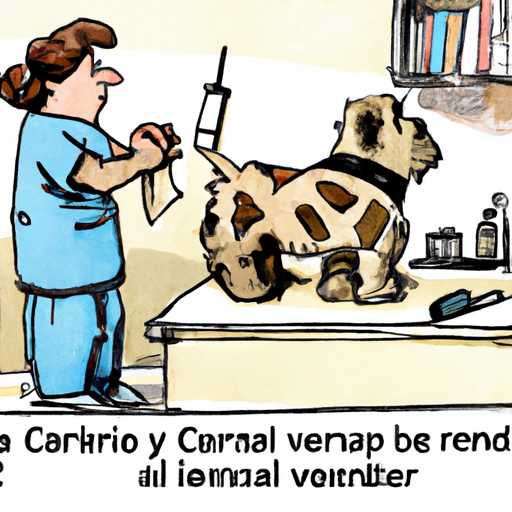An informative guide for the caring dog owner, on how to manage a canine tail wound, with the tenderness of a caregiver and the precision of a seasoned vet.
1. Understanding the Issue
As a caregiver, your pet’s well-being is paramount. When your dog’s tail starts bleeding, it can be a cause for concern. Wounds on the tail can be challenging to treat, primarily because dogs use their tails for communication and balance. They tend to wag them frequently, which can exacerbate the injury and make it harder to heal. Tail injuries can result from diverse causes, from accidents, fights with other animals, or even from hitting against hard objects.
2. Initial Steps to Take
When you notice your dog’s tail bleeding, the first thing to do is to stay calm. Your pet can sense your anxiety, and it may make them more agitated. Follow these steps:
- Approach your dog calmly and gently. Speak in a soothing voice to keep them relaxed.
- Examine the tail. Identify the source of the bleeding, and assess the severity of the injury.
- Clean the wound. Use warm water and a mild antiseptic to clean the wound. Avoid using hydrogen peroxide as it can slow down the healing process.
3. How to Stop the Bleeding
After cleaning the wound, the next step is to stop the bleeding. Here’s how:
- Apply Pressure: Use a clean cloth or bandage and apply direct pressure to the wound. Maintain the pressure for a few minutes until the bleeding stops.
- Use a Styptic Pencil: If the bleeding doesn’t stop, use a styptic pencil, which can coagulate the blood and help stop the bleeding.
| Method | Description |
|---|---|
| Apply Pressure | Use a clean cloth or bandage to apply direct pressure to the wound. |
| Use a Styptic Pencil | If the bleeding doesn’t stop, use a styptic pencil, which can coagulate the blood and help stop the bleeding. |
4. Aftercare and Healing
Once the bleeding stops, the wound needs proper care to heal:
- Bandage the Tail: Use a sterile bandage to wrap the tail. Ensure it’s not too tight to restrict blood flow.
- Monitor the Wound: Check the wound regularly for signs of infection, such as redness, swelling, or pus.
- Visit the Vet: If the wound doesn’t improve in a few days, or if your dog seems in pain, visit the vet.
5. Preventing Future Injuries
Preventing tail injuries is better than treating them. Ensure your dog’s environment is safe, and they’re not prone to tail injuries. Avoid rough play or situations that might result in tail injuries. Regular grooming can also help in preventing tail injuries.
Frequently Asked Questions (FAQs)
Q: How long does it take for a dog’s tail to heal?
A: Healing time can range from a few days to a few weeks, depending on the severity of the injury.
Q: Can I use human bandages on my dog’s tail?
A: Yes, but ensure they’re not too tight and check regularly for signs of infection.
Q: What if the bleeding doesn’t stop?
A: If the bleeding doesn’t stop after applying pressure for several minutes, seek immediate veterinary help.
Remember, when it comes to your pet’s health, always consult with a professional veterinarian for advice and treatment.



